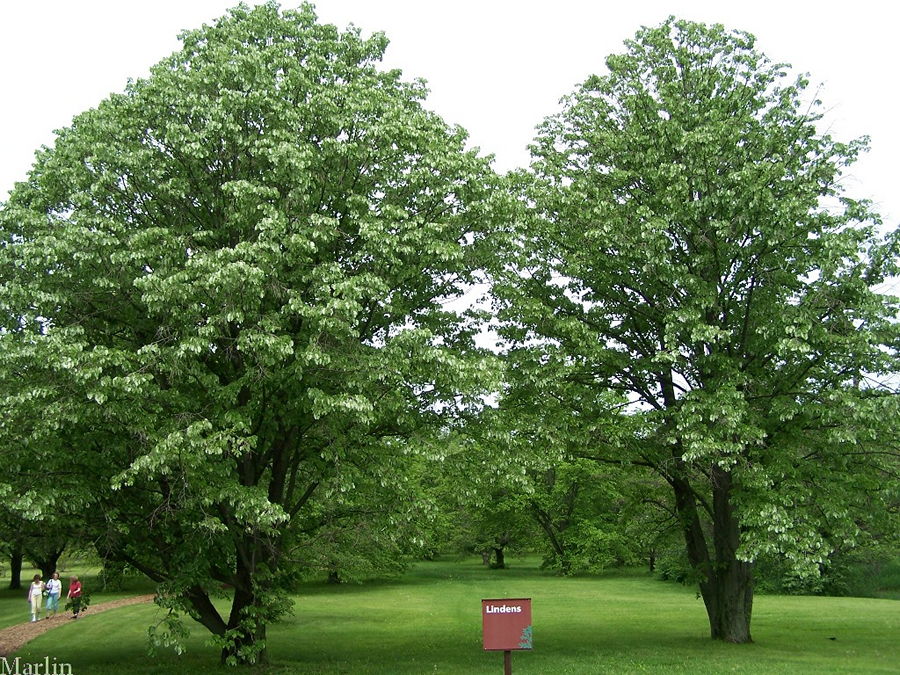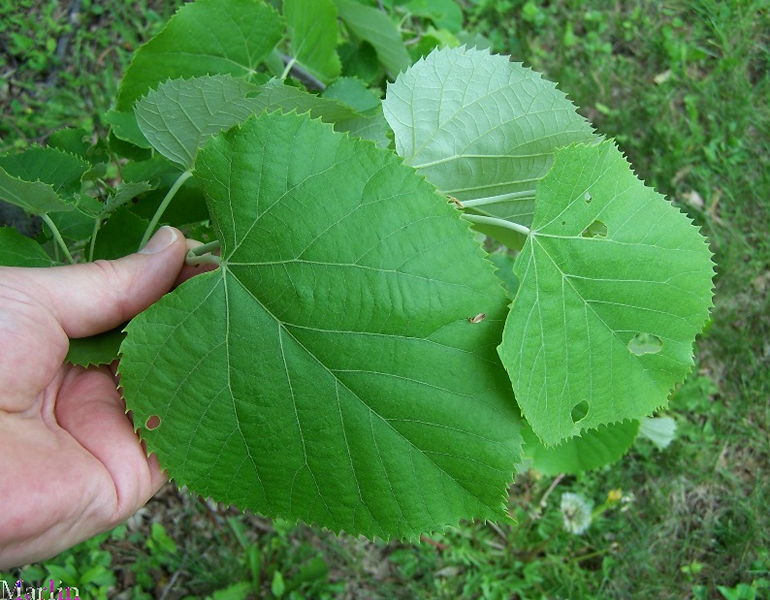 |
Upright Silver Linden – Tilia tomentosa 'Erecta' Family Tiliaceae – Basswoods & Lindens have fragrant tiny flowers that attract a gigantic panoply of pollinators and produce highly-valued honey. |
Custom Search
|
 These upright silver lindens are 34 years old [2] |
| Linden variety 'Erecta' is an excellent choice for a street or shade tree. They are especially hardy, tolerant of alkaline soils, visited by few destructive insects and exhibit a natural, pyramidal shape that requires little pruning. They produce small, round, persistent fruits that are attached to leaf-like appendages. These trees have attractive, golden yellow fall color [1].
However, lindens are increasingly susceptible to Japanese beetle infestation with the resulting skeletonization of foliage. Little-leaf linden is especially unable to resist this destructive agricultural pest. |
 |
| The fragrant flowers of the Linden tree hang from the middle of leafy, ribbon-like green bracts in long-stalked clusters. The flowers are tiny, with 5 yellowish-white petals. During the last weeks of June and first weeks of July they exude a powerful, haunting scent that can be detected up to a mile away.
The flowers possess a nectar which attracts bees and produces a strong flavored honey. When this tree is in flower it will be full of bees, hence its common name "Bee Tree". During the three weeks that the Lindens bloom, bees forsake most other flowers. The honey that they make of Linden nectar is white in color, and highly regarded. The flowers when gathered and dried can be used to make tea. Linden flowers are used in the manufacture of perfumes. |
| When the flowers go to seed they form small nutlets that contain 1 or 2 seeds each, clustered beneath large leafy wing bracts which act as parachutes as they carry the seeds to the ground. The fruits are woody and about the size of peas. The leaves are heart-shaped, 2-3 inches long. Linden wood is soft and creamy, and it is much favored by woodcarvers because of its workability (it is said to "cut like cheese") and its even grain. In past centuries it was used to make ship's figureheads and cigar-store Indians. Today it is used for broom handles, beehive frames, piano sounding boards and certain parts of guitars. — USDA NRCS Plant Fact Sheet |
| References 1. USDA, ARS, National Genetic Resources Program. (GRIN) "Taxon: Tilia tomentosa Moench" 2. Morton Arboretum upright silver linden acc. 1040-65-1&2 photos by Bruce Marlin |
| Tree Encyclopedia / North American Insects & Spiders is dedicated to providing scientific and educational resources for our users through use of large images and macro photographs of flora and fauna. |
Family Tiliaceae – Basswoods, Lindens |
